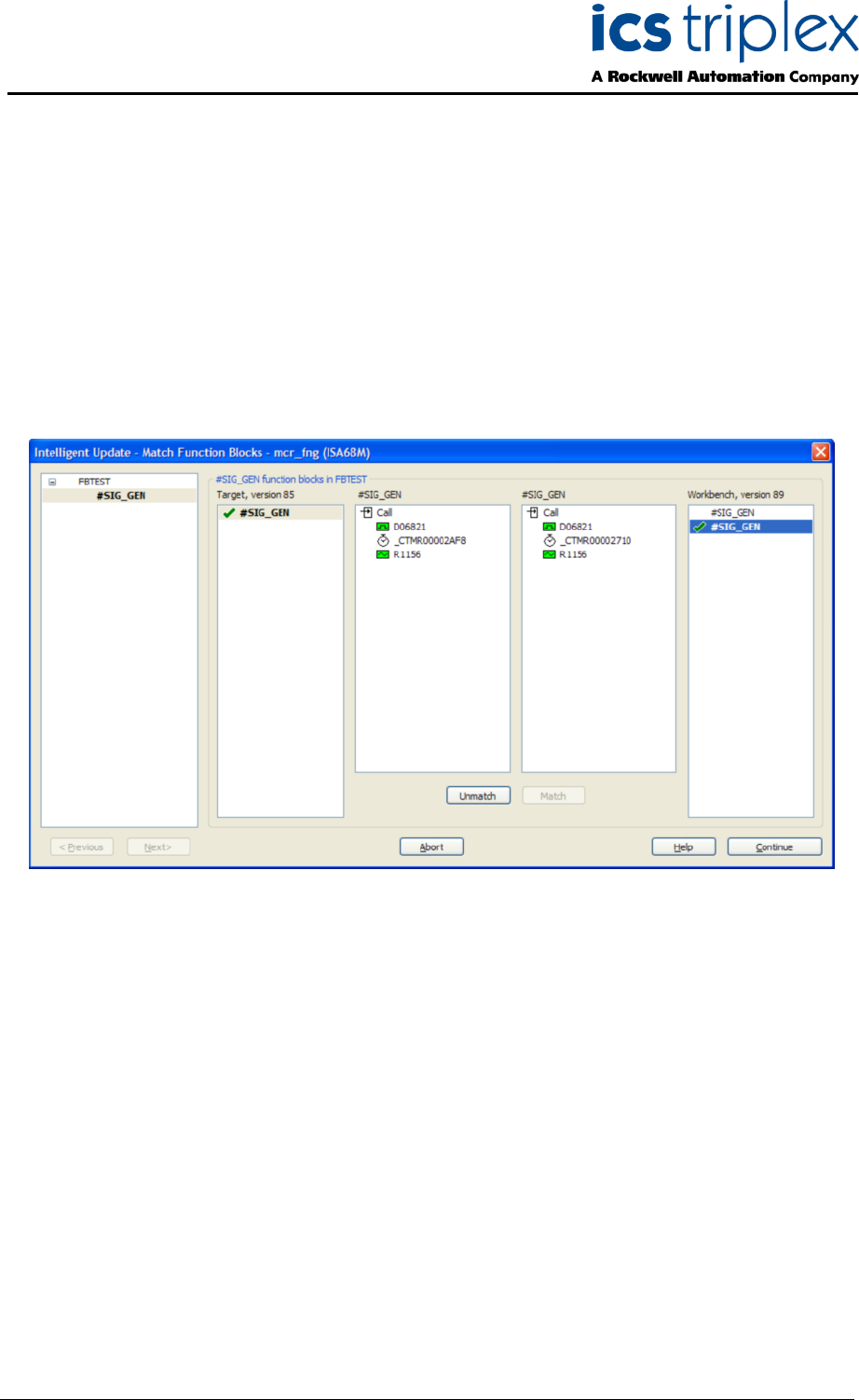Instruction Manual
Table Of Contents
- Intelligent Update Enhancement
- Enabling Intelligent Online Updates
- Manual function block matching (from release 3.5.1)
- Operation
- Important Information
- Intelligent Online Update Manager Window
- Intelligent Update Manager Options
- Match Function Blocks Window
- Intelligent Updates Manager Reports
- Operation
- Supported Changes
- General Rules
- Temporary Variables and Function Blocks (before release 3.5.1)
- Other issues
- Toolset upgrade to 3.51
- Virtual boards
- Unused local variables
- Baseline version
- Instance data limit exceeded
- Conversion tables
- OEM parameters
- ‘NO CHANGE’ when changes have been made
- Attribute changes
- Forced I/O
- Don’t delete the APPLI.MDF and APPLI.MDH files
- Real inline constants
- Don’t Update Later
- Processor hot swap and online update
- Counting Timer and update
- IOU Manager Options
- CRC Differences
- Communications Blackout
- Compilation for Intel
- Constant variables not updating when set to 0 initially
- Power Flow Debugging option change causes update problems on untouched programs

Trusted
TM
AN-T80009 Trusted
TM
Intelligent Online Updates
Issue 4 Nov 08 AN-T80009 4
1.2. Manual function block matching (from release 3.5.1)
Function blocks are identified by the Online Update manager using the names of the variables wired to
their inputs. Where the inputs match, the online update manager automatically creates a recipe to
transfer the values of local variables inside the function block to the new version for bumpless transfer.
However, function blocks with inputs wired from other blocks or from corner connections cannot be
uniquely identified, because these wires are given temporary names which may change on each
compilation. These are reported as ‘DELETED’ and ‘NEW’ before release 3.5.1 and their local
variables reset to initial values.
At release 3.5.1, a manual matching window is presented on compilation, if there are any function
blocks which need the user to confirm a match.
This window shows each type of function block in each program. ‘Previous’ and ‘Next’ page through
each matched group of function blocks. Each function block which needs manual matching is shown,
with its calling parameters, traced back to named variables.
In the matching window above, select the old function block on the list on the left for the existing
running application, select its equivalent in the new application, and click ‘Match’ to inform the update
manager that these are the same function block.
When all pre-existing blocks are matched, click ‘Save and Continue’.










